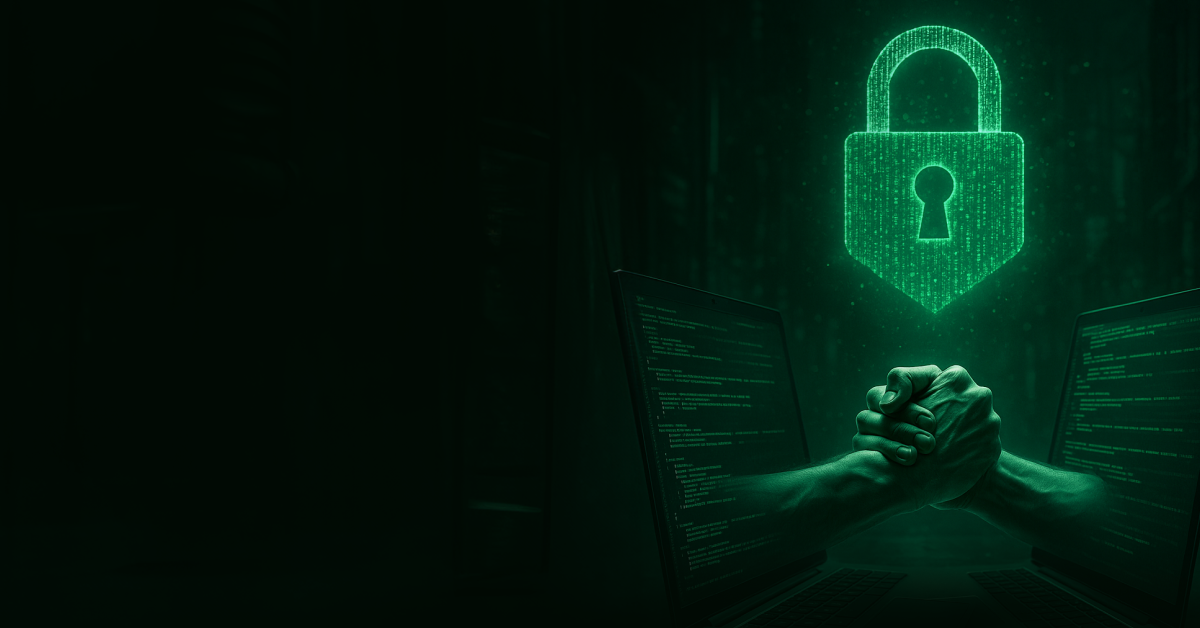When changes occur without logging, context, and an accountable party, it’s more than just an inconvenience. It’s a potential security risk, a policy violation, and a major headache during every audit. It’s also a direct path to that familiar question heard in every crisis meeting: “Who did this?”
For many organizations, that answer is unclear. One admin updates a library on a server, another restarts a service in production, while a third isn’t even aware that any changes have happened. The result: something has changed, but there’s no record of it. That’s where headaches begin for cybersecurity professionals.
That’s why change control is now a non-negotiable part of modern cyber hygiene. It’s not just about monitoring. It’s about knowing what’s happening across your entire digital environment in real time.
Tripwire Enterprise addresses these challenges by providing deep visibility into changes and maintaining an accurate record of system modifications throughout your enterprise environment.
What is Tripwire, and why use it
Tripwire Enterprise is a platform designed to ensure the integrity of files, operating systems, servers, endpoints, network devices, and other critical assets. It helps organizations detect unauthorized changes in systems, adhere to security requirements, and ensure compliance with standards.
- Monitoring configuration changes
The platform combines two key mechanisms: File Integrity Monitoring (FIM) and Security Configuration Management (SCM), enabling system integrity control at all levels. The first captures any changes at the file level, while the second verifies configuration compliance with corporate security policies.
- Auditing and security policy compliance
Tripwire reduces the burden on teams during audit preparation and helps meet dozens of standards simultaneously (NIST, PCI DSS, ISO 27001, etc.). What’s more, it does this not just “on paper” but in real time, as it updates compliance statuses daily.
- Automatic incident detection
The platform records unauthorized changes, helping to detect attacks at an early stage, including ransomware, APT campaigns, and zero-day vulnerabilities. Tripwire doesn’t just react. It allows you to see an incident before it escalates into a problem.
Tripwire not only detects a change but explains it: Is it part of a planned update? Or a suspicious action that needs immediate investigation?
Core capabilities and modules of Tripwire Enterprise
Tripwire lays the foundation for organized control over all changes in your digital environment. To understand exactly how it works, let’s explore the platform’s key capabilities and modules.
1. File Integrity Monitoring (FIM)
This is the basic Tripwire module that records any changes at the level of files, configurations, system objects, network equipment and devices, operating systems, servers, endpoints, and a wide range of other critical assets. It’s not just about what changes occurred, but also who made them, exactly where, and when. FIM provides context, allowing teams to distinguish the legitimacy of changes.
2. Security Configuration Management (SCM)
SCM verifies configuration compliance with corporate security policies and external standards in real time. The platform boasts the industry’s largest library of policies and out-of-the-box templates, enabling simultaneous compliance with multiple standards with minimal effort.
3. Change audit and validation
Tripwire automatically detects unauthorized changes and validates authorized ones, such as those within the scope of approved changes based on a request. This ensures that all updates genuinely occurred within regulations, and any deviations are recorded and explained. The module also enables quick searching of vulnerable or modified files by path, name, or hash.
4. Integration with SIEM, ITSM, and CMDB
Tripwire easily integrates with other systems, such as Splunk and ServiceNow, as well as any solutions via OpenAPI. This allows for enriching security events, automating incident creation, linking changes to change requests, and gaining a complete picture of events within the ecosystem. Additionally, the Tripwire Axon agent allows scripts to be run on remote machines for mass updates, service restarts, incident response, and change rollbacks.
Furthermore, the latest version of the platform — Tripwire Enterprise 9.3 — includes the following updates:
- Support for IPv6-only environments – critically important for organizations adhering to modern standards.
- Extended integration with Splunk, including support for clustered and cloud deployments.
- New capabilities for Tripwire Axon agents for automation and data collection in scalable environments.
Typical issues that Tripwire solves
No tool exists in isolation. Its value is defined by how well it solves real problems for real teams. With Tripwire Enterprise, these tasks differ for executives responsible for security policy and for technical specialists who work directly with the infrastructure. Here’s how Tripwire benefits different roles within an organization.
For CISO / CIO
Hard to maintain compliance → Tripwire ensures continuous compliance through automated monitoring, a large policy library, and audit-ready reporting.
Lack of change visibility → The platform provides centralized visibility into all changes — what, where, when, and by whom something was changed. This eliminates blind spots and allows for faster response to risks, preventing or minimizing downtime consequences.
Audit readiness and transparency issues → Tripwire automatically generates reports for internal and external audits. As a result, auditing is no longer a stressful marathon but a managed process with a predictable outcome.
For engineers / admins
Difficulties with root cause analysis → FIM and SCM provide precise information about changes that preceded a problem, with specific details. This significantly reduces mean time to resolution (MTTR).
Manual change tracking is time-consuming → Tripwire automates change tracking, validates it, and allows for large-scale configuration management. Less manual work means more time for priority tasks.
Changes are often undocumented or go unnoticed → The platform records even the smallest changes in systems and configurations, documents them, and, if necessary, initiates incidents in ITSM systems. This avoids situations where “no one knows what happened two years ago.”
Business value of Tripwire Enterprise
To fully appreciate the platform’s value, it’s also important to see how Tripwire affects daily operations, not only at the moment of an incident but also from a strategic perspective. After implementing Tripwire Enterprise, companies don’t just “see” changes; they begin to manage them. This impacts not only security but also processes, efficiency, and the team’s confidence in daily work.
1. Reducing the human-factor incidents
Many security failures begin with careless or unauthorized interference. Tripwire reduces this risk: it records all changes in real time, controls policy deviations, and provides automated configuration verification. Less manual work means less room for error.
2. Faster incident response through context
Context is key to rapid response. Tripwire shows not only the fact of a change but also the specific circumstances: who made it, on which node, and at what moment. This significantly reduces the time spent finding the source of a problem and allows focus on critical incidents.
3. Audit readiness
Tripwire automatically generates a complete log of changes, compliances, and actions — in a format convenient for internal or external audits. Instead of panicked “last-night” preparations, teams have a daily updated picture of compliance at their disposal.
4. Reduced downtime (MTTR) and unplanned work
When a critical system goes down, every minute counts. Tripwire helps isolate the cause, restore a baseline configuration, or quickly roll back changes before the problem scales. Automating incident response helps avoid manual remediation, allowing you to focus on strategic tasks.
5. Flexible deployment across cloud, on-premise, and hybrid environments
Tripwire does not require a complete infrastructure overhaul. It can be implemented incrementally: in the cloud, on local servers, or in a hybrid environment. The platform also supports integrations with existing tools, including ITSM, CMDB, AD, and SIEM, and allows for building protection without business disruption.
Tripwire Enterprise use cases
Every organization has its own tasks, but the consequences of losing control over changes are often similar: downtime, data loss, and decreased trust. Tripwire Enterprise not only helps track, analyze, and record changes but also prevents a single error or unauthorized intervention from causing a large-scale failure. Let’s examine four common scenarios that illustrate the value of this solution.
1. DevOps / IT teams: managing production changes
In CI/CD environments with frequent releases, it’s essential to ensure changes are authorized. Tripwire logs all modifications, maps it to change tickets, and flags unauthorized or accidental activity.
Example: A DevOps team deploys a web server configuration update. Tripwire validates consistent deployment and alerts on anomalies, such as one server receiving an extra configuration parameter. This helps avoid errors that can be costly in production environments.
2. FinTech/banking: PCI DSS and regulatory compliance
Financial institutions operate under strict regulatory pressure. Tripwire ensures continuous compliance with PCI DSS, SOX, and GDPR by tracking changes and automating audit reporting.
Example: A bank uses Tripwire to monitor payment servers. During a PCI DSS audit, the platform’s reports are accepted as proof of robust change control, accelerating the audit process.
3. Critical infrastructure: SCADA/ICS protection
In sectors such as energy or transportation, change control has a direct impact on physical safety. Tripwire monitors SCADA/ICS changes without disrupting operations. Supports both agent-based and agentless models.
Example: An energy provider integrates Tripwire with its OT network to detect unauthorized PLC changes and meet NERC CIP or IEC 62443 compliance.
4. SOC: incident context and noise reduction
Tripwire is a powerful contextual layer in security monitoring. In SOC environments, it identifies whether a change is legitimate or a security concern.
Tripwire helps:
- Filter out “noise” and focus on suspicious changes.
- Integrate with SIEM (e.g., Splunk) and ITSM (ServiceNow).
- Automatically create incidents in response to unapproved changes.
Example: An insurance company’s SOC uses Tripwire to detect anomalies on web servers. After an update without a corresponding request, the system automatically initiates an incident in ITSM and displays information on the analyst’s dashboard with clear details of “what/where/when/by whom” was changed.
Conclusion
In digital infrastructure, everything changes constantly, and these very changes can lead to incidents, downtime, or non-compliance. Ordinary change notifications without context about what happened and a clear understanding of how the current system state differs from a secure baseline do not provide adequate protection.
Tripwire Enterprise provides the transparency many organizations lack, allowing them to transform chaotic changes into a predictable, secure, and manageable process. In an environment where response time is critical and the cost of error is high, this solution provides a truly significant advantage.
Contact us to discuss scenarios specifically for your organization. Our experts will help you assess how this solution can integrate into your infrastructure, optimize processes, and provide real change control.
 Austria
Austria  Azerbaijan
Azerbaijan  Bosnia and Herzegovina
Bosnia and Herzegovina  Bulgaria
Bulgaria  Croatia
Croatia  Czech Republic
Czech Republic  Denmark
Denmark  Estonia
Estonia  Finland
Finland  Georgia
Georgia  Germany
Germany  Hungary
Hungary  Kazakhstan
Kazakhstan  Kyrgyzstan
Kyrgyzstan  Latvia
Latvia  Lithuania
Lithuania  Moldova
Moldova  Montenegro
Montenegro  North Macedonia
North Macedonia  Norway
Norway  Poland
Poland  Romania
Romania  Serbia
Serbia  Slovakia
Slovakia  Slovenia
Slovenia  Sweden
Sweden  Switzerland
Switzerland  Tajikistan
Tajikistan  Turkmenistan
Turkmenistan  Ukraine
Ukraine  Uzbekistan
Uzbekistan 



